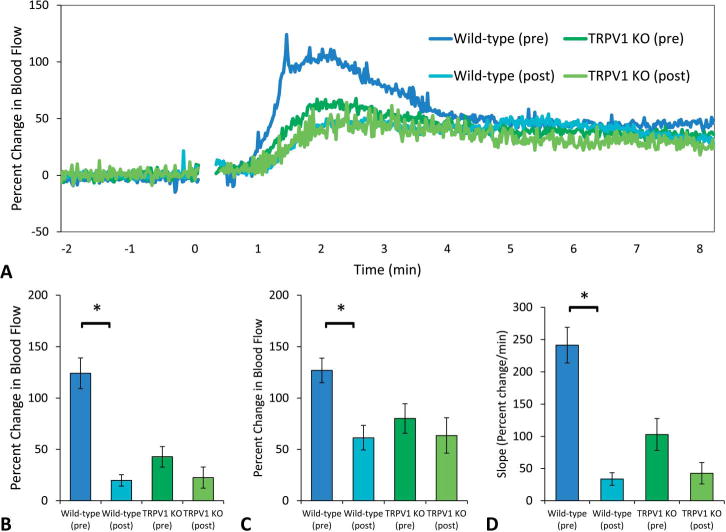FIGURE 8.

A, Mean blood flow responses before and after chronic niacin. After 2 weeks of repeated exposure to niacin, wild-type mice demonstrated significant tachyphylaxis (dark blue, n = 9 vs. light blue, n = 7), whereas TRPV1 KO mice showed only a slight reduction in blood flow responses (dark green, n = 9 vs. light green, n = 4). Both wild-type and TRPV1 KO mice lack the initial peak after chronic niacin exposure. B, Blood flow at the initial peak. At this time point, there was a reduction in blood flow from 124 ± 15 to 20 ± 6 % change in wild-type mice (P < 0.05) and a reduction from 43 ± 10 to 23 ± 10 % change in TRPV1 KO mice (P = 0.13). C, Blood flow at the secondary peak. Wild-type mice had a reduction from 127 ± 12 to 61 ± 12 % change in the secondary peak (P < 0.05), and TRPV1 KO mice had a reduction from 80 ± 14 to 64 ± 17 % change (P = 0.26). D, Slope of the initial change in blood flow. The rate of the initial rate of change in blood flow was lower postchronic niacin in wild types (34 ± 10 from 241 ± 28 % change per minute) (P < 0.05) and was lower in TRPV1 KO mice (43 ± 17 from 103 ± 25 % change per minute) (P = 0.08).
